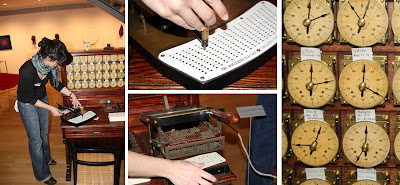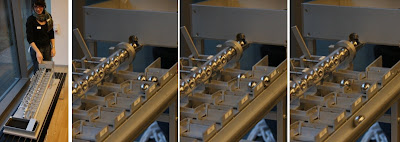Today we visited Christian Müller at DFKI in Saarbrücken. He organized a workshop on Automotive User Interfaces at IUI last week. My talk was on new directions for user interfaces and in particular arguing for a broad view on multimodality. We showed some of our recent projects on car user interfaces. Dagmar gave a short overview of CARS our simulator for evaluating driving performance and driver distractions and we discussed options for potential extensions and shortcomings of the Lane Change Task.
Being a long time skeptic about voice interfaces I was surprise to see a convincing demo of a multimodal user interface combining voice and a tactile controller in the car. I think this could be really an interesting option for future interfaces.
Classical voice-only interfaces usually lack basic properties of modern interactive systems, e.g. as stated in Shneiderman’s Golden Rules or in Norman’s action cycle. In particular the following points are most often not well realized in voice-only system:
- State of the system is always visible
- Interactions with the system provide immediate and appropriate feedback
- Actions are easily reversible
- Opportunities for interaction are always visible
By combing a physical controller with voice and having at the same time the objects of interaction visible to the user (as part of the physical system that is controlled, e.g. window, seat) these problems are addressed in a very interesting way. I am looking forward to seeing more along these lines – perhaps we should also not longer ignore speech interaction in our projects 😉


















